Consider a world in which animals could communicate with people, express their ideas and feelings, and engage in more in-depth interactions. One such animal is the giant panda, their unique black and white coats, as well as their laid-back behaviors, make these kinds of mammals stand out.
These fascinating wild mammals are mostly native to China, but there is a lot more to Pandas than first appears. Behind these animals’ adorable exteriors, they have unique characteristics, Behavioral adaptations, social behaviors and special vocalization etc.
In this article, we are going to dive into the realm of the giant panda to discover some of the most fascinating and amazing facts about their behavior. So, sit back, relax, and get ready to explore the fascinating realm of the giant Panda!
A Short Overview of Different Behavioral Traits
Before analyzing the giant panda’s behavioral facts, it may be helpful to give a brief overview of their behavioral facts to get a quick understanding of their way of life.
| Behavioral Traits | Description (Key Facts- Summary) |
|---|---|
| Growing Habits | 1. Unique growth pattern 2. Development Stages 3. Physical Adaptations 4. Life Span |
| Feeding Habits | 1. Feeding Techniques 2. Food sources 3. Food Consumptions |
| Breeding Habits & Migration Patterns | 1. Breeding and mating process, 2. Courtship 3. Breeding period, 4. Reason for migration |
| Ecological Adaptations | Important facts about adaptations to the environment |
| Aggression & Territorial Habits | 1. Predators 2. aggression 3. Foraging Food |
| Social Dynamics | 1. Interact socially, 2. Coordinate movements 3. Vocalization Skills |
Reason for Different Behavioral Aspects of Giant Panda
Pandas, like all other animals, have developed certain behaviors that enable them to live and prosper in their natural environment. This happens based on different facts.
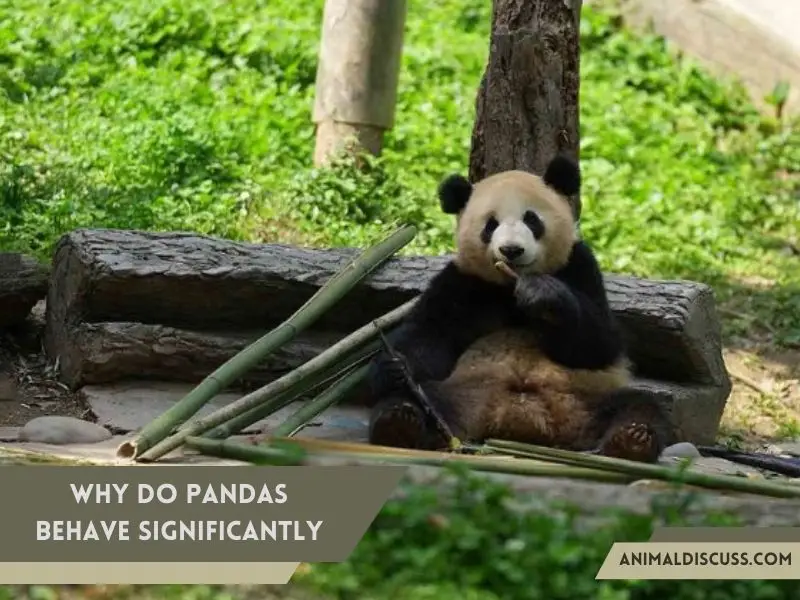
Such as food availability, survival in the environment, Interaction with other species, and so on, impact their behavioral aspects.
Significance of understanding diversified behavior of Panda
Overall, pandas’ behavioral patterns are crucial to the species’ viability and survival. By studying these behaviors, we can value and safeguard these amazing animals better.
Understanding the diversified behavior of Pandas is significant for several reasons:
- It aids us to appreciate and protect these amazing animals and their habitats.
- It allows us to better understand their ecological role and the ecosystem they abide in.
- It helps in developing conservation techniques to address problems such as habitat loss.
- It provides guidance into the unique acclimatization and evolutionary history of Pandas.
- It helps us observe the impact of human activities and climate change on pandas and their behaviors.
Overall, studying the diversified behavior of Pandas contributes greatly to our understanding of the natural world and helps us protect the biodiversity of this planet.
Growing Habits of Giant Pandas
Pandas are well-known for their distinctive ways of growth. The growth habits of Pandas are significant for their survival and well-being. Conservationists may establish strategies to conserve them in the wild by taking into account their growth habits.
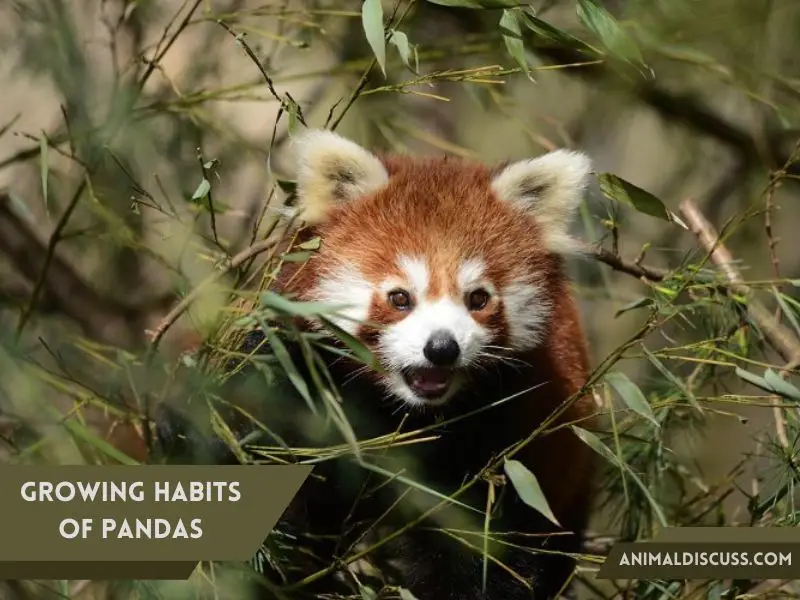
Here are some fascinating details about Pandas’ growth:
Growth adaptations in the 1st Year
- Baby pandas, sometimes referred to as “cubs,” are born hairless, blind, and weighing just 3-5 ounces (85-140g).
- For the first several months of their lives, the babies are fully dependent on their mother since they are blind and defenseless.
- After 40 to 60 days, Pandas open their eyes.
- They only consume breast milk, up to 14 times per day for the first several months of life.
- Within the first few weeks of life, cubs become double in size and begin to develop black patches around their eyes.
- At around three months old, cubs start exploring their environment, and as they grow older, they become more independent and self-driving.
- By the age they are 1 year old, panda cubs weigh around 10-15 kilograms (22-33 pounds) and they are able to climb up trees.
- By the end of their first year, they will weigh around 100 pounds (45kg).
Between 1-5 Years
- Within the ages of 1-2 years, Panda cubs begin to eat bamboo, but they are still nursed by their mother until they are around 18 months old.
- Within the ages of 1-2 years, pandas continue to grow up rapidly, reaching around 150-160 pounds (68-73kg).
- Panda cubs stay with their mother for around 1.5 to 2 years before becoming autonomous and self-driving.
- During this time, they begin to develop their significant black and white fur pattern.
- By the age they are 2-3 years old, they are fully weaned and they are able to survive on their own in the wild. However, they usually stay with their mothers for another year or two to continue learning the important skills and techniques for their survival.
- Within the ages of 2-3 years old, Pandas will begin to show signs of sexual maturity, although they may not breed until they are older.
- By the age of 5, Pandas will reach their full adult size, weighing between 90-135kg on average.
- Female pandas generally reach maturity earlier than males, usually at around 4-5 years old.
Between 5-8 years
- Within the age of 5-8 years old, Pandas become sexually mature and capable of breeding.
- Female pandas have a very little window for reproducing since they only ovulate once a year.
- The gestation period for pandas lasts around 5 months.
Adult Growth adaptations
- After reaching adulthood, pandas will continue to grow steadily over a number of years.
- They won’t grow or shrink significantly, but they could keep building stronger muscles and more dense bones.
- During pregnancy and nursing, female pandas may experience changes to their body size and shape.
- Adult female pandas may weigh up to 220 pounds, compared to the 250 pounds that male pandas can reach.
- Pandas may live up to 35 years in captivity and 20–30 years in the wild.
Overall, Pandas grow more slowly than a number of other animals, which is assumed to be a result of their bamboo diet that provide low nutritional content.
Behavioral Differences: Comparisons Of Growth Habits Among Species
Pandas are not the only the animals from all around the animal kingdom that display unique behavioral traits. Let’s explore how pandas develop in comparison to other animals to better understand these differences.
Here is a comparison chart among the four species of pandas, including their significant differences:
| Species | Location | Height (ft) | Weight (lbs) | Color | Lifespan |
|---|---|---|---|---|---|
| Qinling Panda | Qinling Mountains in China | 2-3 | 220-265 | Brown and white | 20-25 years |
| Bashan Panda | Bashan Mountains in China | 2-3 | 220-265 | Brown and white | 20-25 years |
| Qionglai Panda | Qionglai Mountains in China | 3-4 | 220-330 | Black and white | 20 years |
| Minshan Panda | Minshan Mountains in China | 3-4 | 220-330 | Black and white | 20 years |
Feeding Habits
Feeding habits of Pandas are an interesting part of their behavior. Here are some information on their feeding habits provided below:
Strip the Bamboo: Pandas use their sharp front teeth and heavy jaws to strip off the leaves and outer layers of the bamboo stems, leaving the nutritious inner layers back.
Crush the Bamboo: After stripping the bamboo, Pandas crush the remaining inner layers by their back teeth, making it easier to swallow.
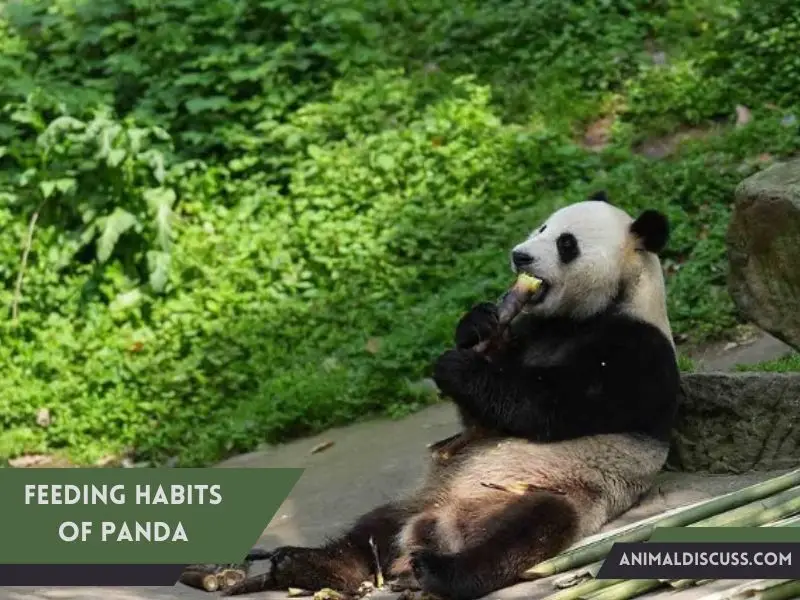
Stand on Hind Legs: Pandas can stand on their hind legs to reach higher parts of the bamboo plants, allowing them to access more food sources.
Use Paws: Pandas use their front paws to catch the bamboo stems while they strip the leaves and outer layers with their teeth.
Swallow Large Pieces: Pandas have a special adaptation in their throat that allows them to swallow large fragment of bamboo without choking.
These techniques enable Pandas to obtain and consume bamboo efficiently, which is their primary food source.
Feeding Habits of Cubs: Young pandas are breastfed until they are around six months old before they start consuming bamboo.
Breeding (Mating) Habits:
Pandas have a special breeding system, where females are fertile only for a short period once a year, typically in the spring season. This is meant that pandas have a very small window for successful reproduction.
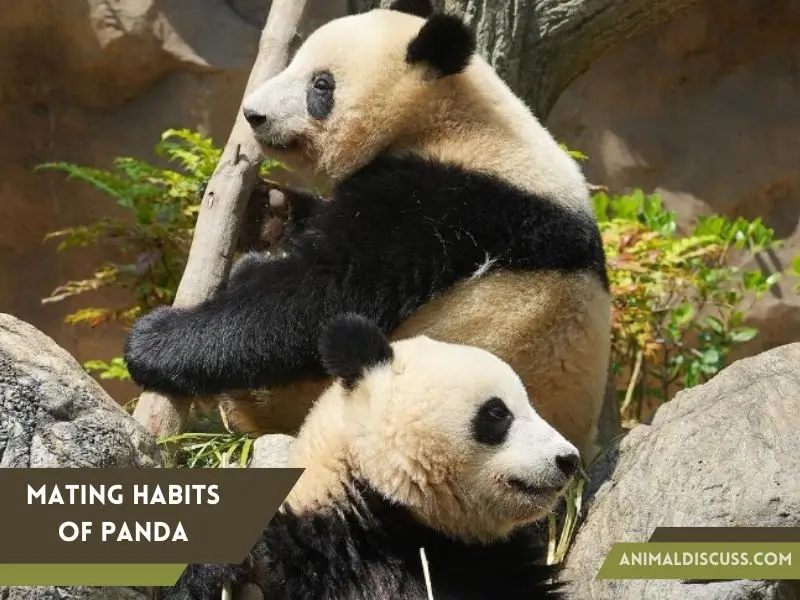
Here are some more facts about Pandas unique breeding habits:
- Pandas involve in courtship activities before mating, including vocalizations, scent marking, and playful behavior.
- Males and females only come and get together during the mating season. Males compete for getting access to females during the breeding season, and fights can be severe.
- Female pandas are generally supposed to give birth to one or two cubs at a time, which they care for specially for the first few months of their lives.
- Female pandas ovulate only once a year, and the exact and peak time of ovulation is so tough to predict.
- Once a female panda chooses a partner, they will engage in copulation several times over a period of few days.
- After mating, the fertilized egg can take anywhere from 3 to 5 months to implant in the female’s uterus, lengthening the actual pregnancy.
- Gestation period lasts for around 5 months, and during this time, the female will spend more time in her cave and consume more bamboo to prepare for giving birth.
- Pandas have a high infant mortality rate, about half of cubs can survive their first year.
Panda Migration Patterns
Like many other creatures, Pandas do not migrate a long distance. Actually, Pandas are well-known for their close attachment to their home ranges and staying in one area for most of their life.
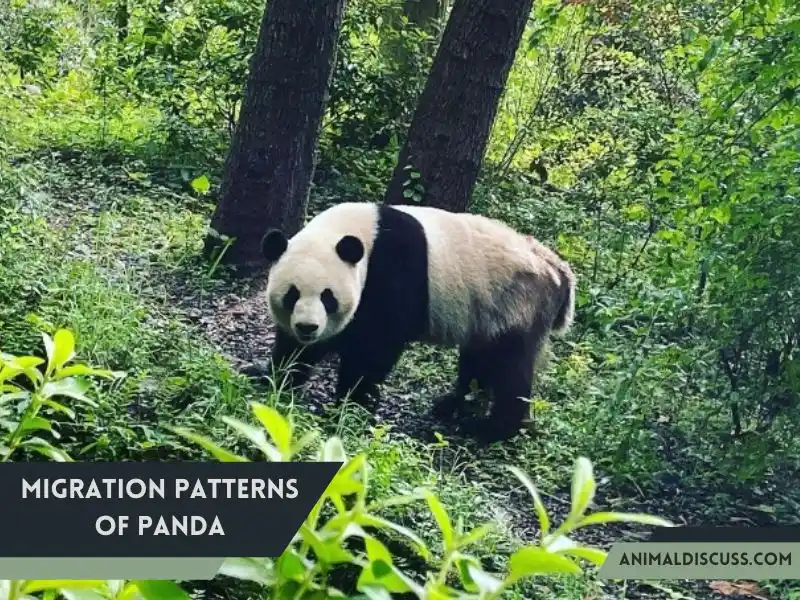
Here are some more facts about Pandas’ migration patterns:
- Pandas move within their home ranges to find food and water resources, but they normally stay within a relatively small arena.
- Young pandas may be dispersed from their mothers and make their own home ranges, but they typically do not move very far away.
- Pandas in the wild are primarily abide in the mountainous zones of central China, and they are adapted to survive in their own environment not moving long distances.
We have come to know that for migration patterns, Pandas sometimes may perform some seasonal movements within their range in response to natural changes in food availability and environmental conditions.
Ecological Adaptations
Ecological adaptations are modifications made to a species’ behavior, physiology, and morphology in order to survive and thrive in its surroundings.
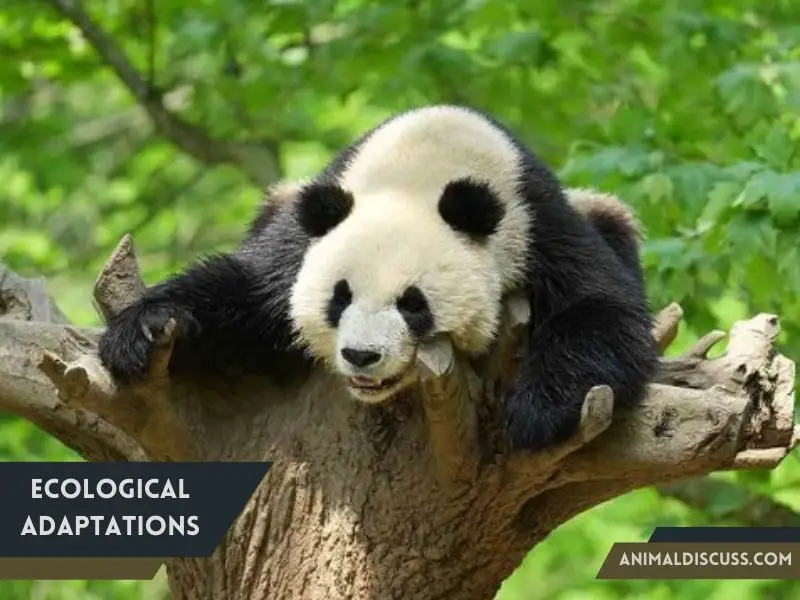
Pandas have extraordinary adaptation techniques that allows them to achieve success in their natural environments. Here are some facts about how Pandas ecologically acclimatize:
Thick Fur: Pandas have a stout layer of dag that allows to keep them warm in cold temperature. Their fur is also water-exclusive, which helps them to stay dry in rainy and snowy situations.
Camouflage: Pandas have a charming black and white coat that helps them to blend in with their environment. Their black and white fur pattern is considered to help them avoid predators and hide from forcible threats.
Climbing Ability: Pandas have sharp claws and they are remarkable climbers. They can climb up trees as well as swim in rivers and streams, which make them to move around their habitats and find food.
Slow Metabolism: Pandas don’t need to consume as much as other animals their size since they have a slow pace metabolism. This adaptation enables them to preserve energy and endure in environments with a lack of food.
Reduced Competition: Pandas have developed to occupy a comfortable place in their environment where they face less competition from other creatures. They are capable to feed on bamboo, which is not grasped by many other animals, allowing them a unique advantage in their ecosystem.
In addition, Pandas have a wide range of ecological acclimatization that have allowed them to survive and thrive in their natural habitats.
Aggression And Territorial Habits
Animals, particularly Pandas, frequently exhibit aggression and territoriality. Despite their adorable exterior, Pandas are known to become aggressive under specific circumstances.
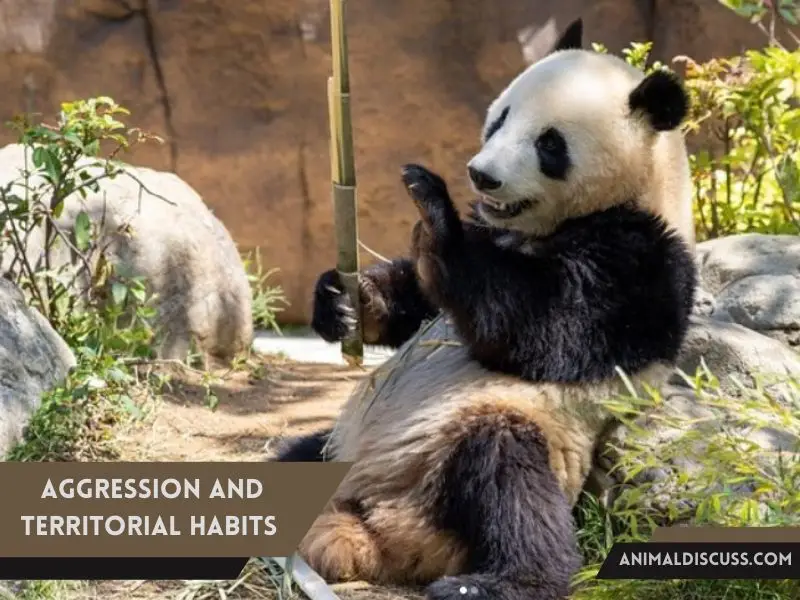
We will go into more depth about their territorial tendencies and violence in this part:
Panda Aggression Habits:
Pandas are typically not aggressive creatures and always prefer to avoid confrontation. Everyone wants to know that are Giant Panda aggressive? They may become aggressive if they feel threatened or their territory is being attacked.
Pandas may show aggressive behavior towards humans and other animals, especially during mating period or when they feel threatened.
During mating period, males can become aggressive towards other males to capture the attention of females.
Females with cubs can also become invective if they feel that their offspring are in hazard. They will use vocalizations and physical displays to warn the predators or attackers to stay safe.
In the wild, Pandas are known to attack humans who enter their territory or reach too close to their cubs.
Despite their aggressive attitudes, Pandas are typically considered to be polite animals. However, it is vital to remember that they are still wild animals and should be treated with caution and respect always.
Panda Territoriality Habits:
Pandas are territorial creatures that use smell glands on their body to indicate their territory.
Males are much territorial than females, and they will fight other males to protect their territory and get a chance of mating with females in their region.
The size of a Panda’s territory may differ based on the sufficiency of food and the density of the Panda population in the region. In areas with a plenty of bamboo, a Panda’s territory may be larger, while in areas with a shortage of bamboo, their territory may be smaller.
Their territories may wide from a few hundred to several thousand acres, based on the sufficiency of food and female partners.
Sometimes, Pandas may also engage in territorial disputes with other creatures, such as snow leopards and red pandas. In these cases, Pandas use vocalizations and physical displays to protect their territory and resist potential predators or attackers.
Social Behavior
Social behavior is a significant part of the lifestyle of Pandas, and they have an intricate system of relationships and interactions with each other.
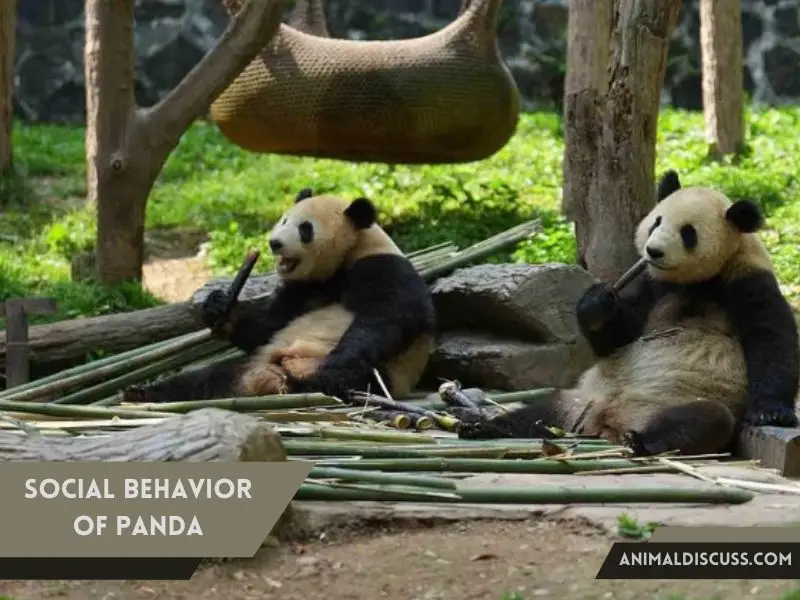
Here are some interesting facts about the social behavior of Pandas:
Solitary Animals: Pandas are mainly solitary creatures, and they typically come and get together during the mating season or when there is a plenty of food in their habitat.
Communication: Pandas communicate through a wide range of vocalizations, such as growls, barks, and bleats, and they may also use body language to express their feelings.
Scent Marking: Pandas use scent marking to contact with each other. They have scent glands on their cheeks, chin, and anal arena, and they rub these areas against trees, rocks, or other objects to leave their scent away. This allows them to identify their territory and contact with other Pandas in their surroundings.
Hierarchy: When pandas get together, they make a social hierarchy, with dominant individuals providing the best resources, such as food and shelter. However, Pandas are typically not aggressive towards each other and try to avoid confrontations.
Mother-cub Bond: Female Pandas have a close bond with their cubs and care for them until they are about 18 months old. During this period, the mother instructs the cub how to forage for food and how to climb up trees.
Playful Behavior: Pandas are well-known for their playful attitudes and they often involve in various activities such as rolling, wrestling, and climbing. Playing is an important part of their social development and allows them to grasp important skills that they will need in future.
Use of Vocalizations: Giant Panda use various vocalizations, scent marking, and body language to communicate, create hierarchies, and close connections with each other. Playful behavior is also an important part of their social development.
Factors That Influence Different Behavioral Traits
The behavioral patterns of Pandas are highly influenced by various factors, including their environment, genetics, and social interactions.
Here are some factors that play a vital role in shaping the behavioral patterns of Pandas:
- Environment: The habitat in which the live highly influences their behavior. The sufficiency of food, water, shelter, and other resources affects how pandas interact in their environment.
- Genetics: The genetic structure of Pandas can also contribute to their behavioral patterns. For instance, some Pandas may have a genetic predisposition of being more aggressive.
- Social Interactions: The social interactions and relationships of Pandas, both with members of their own species and with other creatures, can also affect their attitudes. For example, Pandas that grow up in groups may be more sociable, friendly and have a close social bond than those that grow up lonely.
- Age: The age of a Panda can also affect their behavior. Younger Pandas may be more playful and energetic, while older Pandas may be less active.
- Health: The health of a Panda can also influence their behavior. Ill or injured Pandas may show different behaviors than physically sound Pandas, such as being less active or more aggressive.
Human-Induced Factors That Change Animal Behavior
Humans and their activities have a potential contribution on the behavior of animals, including Pandas. While natural reasons such as availability of food, competition, and mating opportunities play a vital role in shaping the behavior of Pandas, human-induced factors cannot be neglected.

Here are some ways that human activities have changed the behavioral patterns of Pandas:
01. Human Presence:
Pandas are increasingly interacting with humans as human population continue to rise. As a result, they may alter their behavior as they become accustomed to interacting with people and learn to rely on them for food. However, it can also have unfavorable outcomes including increased stress, alterations in feeding patterns, and decreased reproductive success.
02. Hunting and Poaching:
Despite being a protected species, Pandas continue to be killed and poached for their flesh, fur, and other body parts. The animals may experience intense stress and fear, which may result in behavioral changes including an increase in aggressiveness and territorial behavior.
03. Tourism and Human Interaction:
Pandas frequently engage with people since they are a popular tourist attraction. The animals may experience severe stress and anxiety as a result, changing their behavior and engaging less in mating and eating.
04. Pollution:
Pandas’ behavior can vary as a result of pollution, including in the air and water. For example, pollution can damage their sense of smell, making it more challenging for them to find food and possibly resulting in lower feeding activity.
05 Habitat Loss:
Pandas have been compelled to leave their homes because of habitat damage caused by deforestation, mining, and other human activities. Stress, increased hostility, and alterations in their eating and breeding behaviors can all be results of this shifting.
06. Climate Change:
Pandas’ native habitats are changing due to climate change, which is changing how they feed and reproduce. They may move as a result of this, which may have an effect on their territorial patterns and social behavior.
Conservation Of Their Behavior
Conservation of the charming behavior of Pandas has been a major issue among wildlife conservationists for recent years.
Numerous organizations and institutions have been permitted to take action to conserve these creatures as a result of the fall in the Panda population carried on by habitat loss, poaching, and climate change.
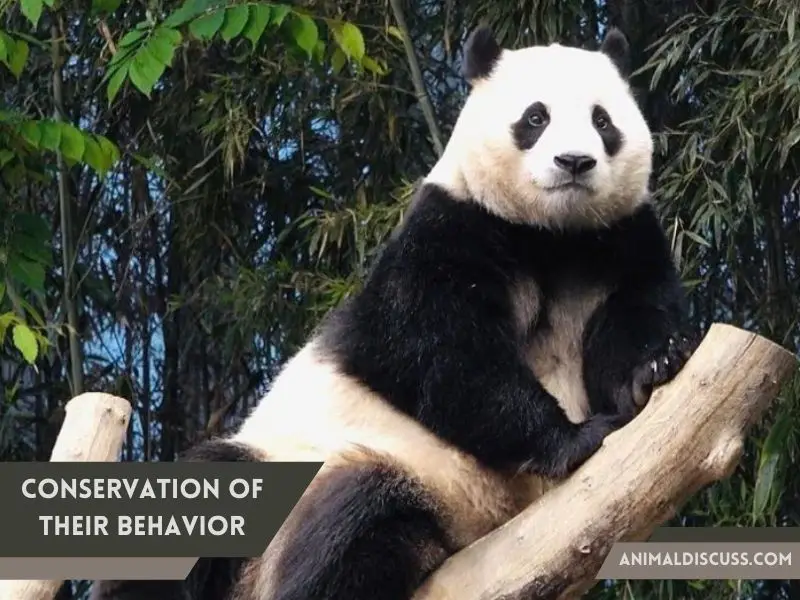
The protection of this magnificent animals and their behavior is actively promoted by a number of organizations. Some of these organizations include:
China Conservation and Research Center for the Giant Panda (CCRCGP):
The Chinese government runs this organization, which is devoted to panda conservation. They have played a significant role in the breeding and releasing of pandas from captivity into the wild.
Pandas International:
This American-based organization is committed to the preservation of pandas and their natural habitats. They strive to raise awareness of pandas and their behavior among the general public and to finance conservation initiatives
World Wildlife Fund (WWF):
For many years, the WWF has worked to protect pandas and their natural habitats. The protection of pandas and their behavior is the focus of several current programs and efforts.
International Union for Conservation of Nature (IUCN):
The IUCN is an international organization devoted to the preservation of biodiversity and the natural world. To encourage the preservation of pandas and their behavior, they collaborate with governments, NGOs, and other groups.
Chengdu Research Base of Giant Panda Breeding:
This Chinese-based organization is committed to panda breeding and protection. In order to increase the number of pandas and better understand their behavior, they conduct many breeding projects.
These organizations are important to the preservation of pandas and their behavior, along with a number of others. Their initiatives have aided in the growth of the panda population and raised awareness of the need to preserve these rare species.
There are also some possible steps to be taken as follows:
- Panda Reserves: Establishing reserves has been a significant milestone in preserving Panda habit. These protected areas offer pandas the resources they need to survive and safeguard their environment.
- Captive Breeding: Another technique for preserving panda habit is captive breeding. Several groups have successfully produced pandas in captivity and released them back into the wild, including the Chengdu Research Base of Giant Panda Breeding.
- Research and Monitoring: These two activities have been crucial to the protection of pandas and their habitat. Research on panda behavior is done by organizations like the China Conservation and Research Center for the Giant Panda, which also keeps an eye on panda numbers both in the wild and in captivity.
- Community Outreach: Programs that inform the public about the value of panda conservation are essential. Numerous initiatives have been launched by organizations like the Giant Panda Global to increase public awareness and advance conservation efforts.
- Government Policies: To safeguard Pandas and their environment, the government should put in place a number of laws and regulations. For instance, in order to stop poaching and habitat degradation, the government should establish panda reserves and enforced legislation.
Conclusion
As we reach the conclusion of this journey into the fascinating realm of pandas, it is obvious that these amazing animals have captivated our hearts and minds for several reasons. Pandas are a fantastic wonder of the natural world with their characteristics, their lovable personalities, and their amazing acclimatization to their surroundings.
There is optimism even if their future is still in doubt and their survival is threatened by issues like habitat loss and climate change. As we look forward, it’s critical that we continue to research and learn from these amazing animals by simultaneously taking efforts to safeguard their natural habitats.
In the end, it is our responsibility to make sure that pandas can thrive in the wild and that their distinctive traits and adaptations remain protected for future generations to enjoy and admire.
Article References:
- https://en.wikipedia.org/wiki/Giant_panda
- https://www.worldwildlife.org/species/giant-panda
- https://nationalzoo.si.edu/animals/giant-panda
- https://animals.sandiegozoo.org/animals/giant-panda
- https://www.iucnredlist.org/species/712/121745669
- https://www.chinahighlights.com/giant-panda/behavior.htm
- https://kids.nationalgeographic.com/animals/mammals/facts/giant-panda
Image Credits:
- Stock.Adobe.com
- Canva.com/photos

